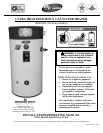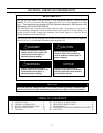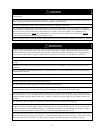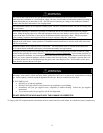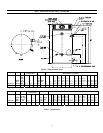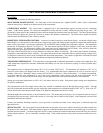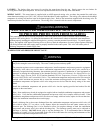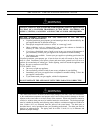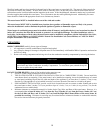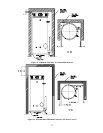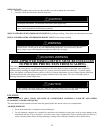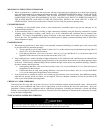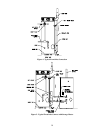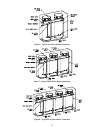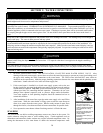
8
CONDENSATE DRAIN – The water heater should either be raised several inches above the floor on a concrete slab or use a low
profile condensate pump to allow free drainage of condensate from the elbow drain fitting. This water heater is a condensing type
unit and requires a drain to be located in close proximity to allow the condensate to drain safely. The condensate drains from the
unit at the exhaust elbow located near the bottom of the unit. The preferred connection to the drain fitting is to use a ¾ inch (1.9
cm) PVC elbow sealed with silicone over the outside of the drain outlet and use ¾ inch (1.9 cm) PVC for the drain trap and
condensate line to a drain. Use a thick bead of silicone caulk over the outside of the drain outlet connection before assembling the
elbow. This is preferred over using the threaded tap because the larger drain line will drain more freely and if too much force is
applied to the plastic threads, the fitting may crack and cause a leak. Make sure the condensate drain line slopes down, away from
the water heater at least ⅛ inch (.3 cm) per foot (.3 m) toward the drain. The condensate drain pipe must not be routed through an
area subject to below freezing temperatures. The condensate build-up will block the exhaust outlet, which will cause improper
operation. Refer to Figure 2 for the proper connection of a PVC elbow to the drain outlet and a condensate trap.
Figure 2. Condensate Elbow With Trap
CLEANOUT – All models are equipped with a cleanout opening to aid in removal of hard water deposits from the tank bottom. If
this water heater operates under hard water conditions, the following should be performed at least every 3 months: Turn off water
supply and drain the water heater. Remove the cleanout jacket cover and tank cover. When cleaning the tank, care must be taken to
avoid trying to break deposits loose as this could damage the glass lining and shorten the life of the water heater. After cleaning, re-
install the cleanout tank cover and jacket cover, and refill with water. Refer to the section, “Section X: Maintenance” in this
Installation and Operating Instruction manual for the procedures for filling and draining the water heater.
SACRIFICIAL ANODES – Four sacrificial anode rods have been installed in the tank head to extend tank life. The anode rods
should be inspected periodically for corrosion and replaced when necessary to prolong tank life. Water conditions in your area will
influence the time interval for inspection and replacement of the anode rods. The use of a water softener may increase the speed of
anode consumption. More frequent inspection of the anodes is needed when using softened (or phosphate treated) water. Contact
the installing contractor, or service provider that installed the water heater or the manufacturer listed on the rating plate for anode
replacement information.



